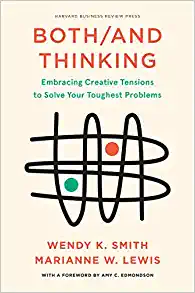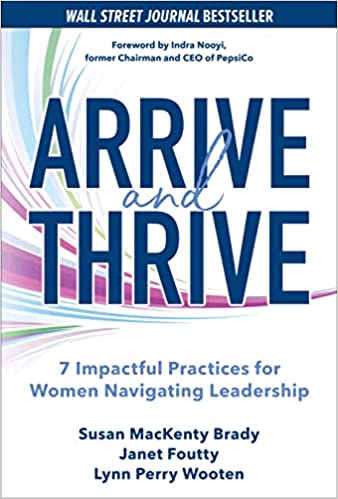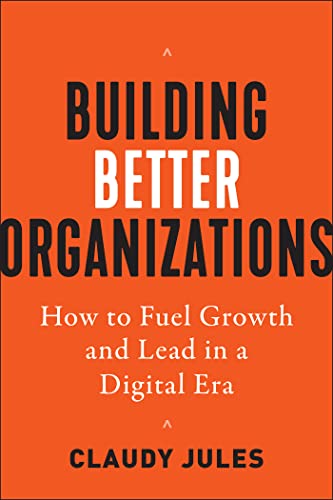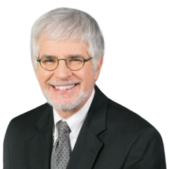
While it is exciting that the Winter 2023 number 107 issue of Leader to Leader, where I am managing editor, is now available, it is also a somber time of reflection for me and my colleagues. Our founder, longtime editor-in-chief and columnist, Frances Hesselbein, passed away at 107 on December 11. I’ve included a brief tribute to Frances in the January 2023 edition of our journal’s online newsletter, What’s Happening in Leader to Leader.
In 2022, Sarah McArthur became Frances’ co-editor-in-chief, and co-author of the column. You will find a link to their Winter 2023 column below, and a sample quote, as well as links and quotes for the other articles in this issue. Please check the Leader to Leader website in the coming weeks and months, when we will publish additional tributes to the remarkable life of Frances Hesselbein.
In the meantime, enjoy these takeaways, and explore the significant contributions of some of today’s most important leaders.
Listening is an Art
Authors/Columnists: Frances Hesselbein and Sarah McArthur; Co-Editors-in-Chief, Leader to Leader
Article: “The Elephant in the Dark”
Sample quote:
- “Have respect for all people.
- Love and be loved – in that order.
- Consider, as a leader, if we can’t control ourselves, how can we be expected to control other people?
- Listening is an art.
- Hold ourselves accountable and responsible to the principles we want others to practice.”
Do What Your Heroes Did
Authors: Marshall Goldsmith and Sarah McArthur
Article: “A Conversation with Marshall Goldsmith about Living an Earned Life”
Sample quote:
“This is easy exercise you can do yourself.
- Write down the names of your heroes.
- Write down one-word descriptors of the values and virtues that endear them to you.
- Cross out their names.
- Write your name in their place.
Now do what they did.”
The Benefits and Limits of Either/Or Thinking
Authors: Marianne W. Lewis and Wendy K. Smith
Article: “Today’s Most Critical Leadership Skill: Navigating Paradoxes”
Sample quote:
“At times, either/or thinking is really useful. We may seek a clear choice when the consequences of the decision are minimal and it’s not worth the time or effort to explore an issue further. We don’t necessarily need to dig deeper into paradoxes to decide what food to order for the organization’s picnic. Yet most of the time, either/or thinking can result in responses to dilemmas that are limited at best and detrimental at worst. Tensions spark defensiveness that leads us to want to make a decision. But making a choice can add to our problems. Psychology studies show us again and again how we prefer stability and consistency over uncertainty and change. Once we make a choice, we often want to maintain consistency. We then become so engrained in how we do something that we become stuck in a rut. We stay where we are until something drastic forces us to change. This tendency usually leads us to overcorrect, swinging the pendulum to the opposite alternative and triggering an ongoing vicious cycle. Organizations often face swings between too much and not enough innovation, or between too much and not enough focus on employee benefits. Ultimately, this kind of either/or thinking can lead us down a vicious cycle that swings between alternative options—a long and winding road, with lots of chaos along the way.”

Lead From the Best Part of Yourself
Authors: Susan MacKenty Brady, Janet Foutty, and Lynn Perry Wooten
Article: “Arrive and Thrive: Committing to the Work of the Inclusive Leader”
Sample quote:
“Practice 1: Investing in Your Best Self: lead from the best part of yourself—and ensure you tend to your mind, body, and spirit for continual renewal
Practice 2: Embracing Authenticity: with intention and ease, bring your whole self to work
Practice 3: Cultivating Courage: commit to action, alongside acknowledging and overcoming your fear of doing so
Practice 4: Fostering Resilience: keep up with the pace and intensity while overcoming setbacks and emerging stronger than before
Practice 5: Inspiring a Bold Vision: enroll others in a mission that awakens their spirit and desire to create a future that does not yet exist
Practice 6: Creating a Healthy Team Environment: personify your organization’s values and standards while creating an environment that is supportive, collaborative, and healthy
Practice 7: Committing to the Work of the Inclusive Leader™: model the way for others while creating the culture of equity and inclusion needed for high performance”
Being a Force For Good
Author: Clarke Murphy
Article: “Decoding the DNA of Sustainable Leaders”
Sample quote:
“So, what do the world’s most successful sustainability leaders that we spoke to all have in common? The first and most fundamental thing is a sustainable mindset. They all share a deep-seated belief that running a business cannot just be about making money—it is also about being a force for good and having a positive impact on the world at large. This passion propels them forward, and allows them to bring everyone else on board with their vision.
It means that instead of relegating sustainability to a single initiative, department or function, they’ve woven it into their core strategy and through their entire operations. Instead of seeing sustainability as an exercise in brand building or risk management, they see it as an opportunity to grow the business—a source of value creation, rather than a matter of reputation. This is what sets them apart.”
A Shared Significant Life Experience
Author: Sean Murray
Article: “From the Volleyball Court to the Boardroom: Leadership Lessons for Building a High-Performance Team”
Sample quote:
“As leaders we can learn from the example of great teams who have created the conditions for a group of individuals to come together and achieve their potential. It is not practical for most of us to take our teams on a three-week wilderness experience, but the key is for your team to experience a shared significant life experience. This can be accomplished in as little as a day by embarking on an activity that is outside of the daily routine, involves everyone, and requires the team to overcome adversity: a long hike, assembling bicycles for disadvantaged youth or volunteering at Habitat for Humanity are three examples.
What Beal and the coaching staff realized is that success is not determined solely by the talent of the players on the court. Rather, it is determined by how well individuals work together toward team success. As leaders we can apply this lesson by articulating the vision for our organization, so everyone is clear about what team success looks like, and then creating the conditions for people to work as a cohesive unit toward achieving that vision. Leaders influence the culture by establishing trust, reinforcing principles and values that align and support the vision, and leading by example in a way that upholds those values.”

A More Diverse Representation of Humanity
Author: Claudy Jules
Article: “Leading in a Digital Era with Equity, Inclusion, and Diversity”
Sample quote:
“It simply makes sense: organizations that wish to increase the equity, inclusion, and diversity of the organization need to have a more diverse representation of humanity not just in the ranks but also sitting at the top table—meaning, the boardroom and C-suite tables. For example, at the beginning of 2019, California mandated that all companies headquartered in the state have at least one female board director (and, in some cases, a higher number) by the end of that same year.
Apart from government mandates, improving the diversity among the top team members of organizations is simply good business. According to a 2018 McKinsey & Company report, companies with executive teams in the top quartile for ethnic/cultural diversity are 33% more likely to enjoy industry-leading profitability. Another study suggests that leadership teams with above-average diversity in companies across developed and emerging economies are better at driving innovation and financial performance, such as improved EBIT {earnings before interest and taxes} margins. For example, according to Gallup, diversity-engaged organizations have 3.9 times the earnings per share (EPS) growth rate. Publicly traded companies with 2D diversity—inherent diversity such as gender, ethnicity, and sexual orientation, combined with acquired diversity, such as skills and education—are 45% more likely to have expanded market share in a year.”
Benefit From a Strong Sense of Self-Efficacy
Author: Kathy Miller
Article: “Leading Effectively and Living Earnestly Through Applying Positive Psychology”
Sample quote:
“A leader’s self-efficacy and the ability to create an environment where each workforce member can contribute to the business through their personal sense of self-efficacy are critical ingredients in developing inclusive cultures. The study of self-efficacy was the focus of the late Albert Bandura, a Canadian-born American psychologist and longtime Stanford University professor. Self-efficacy is the belief that the actions one takes will make a difference. Since Bandura’s 1977 Psychological Review article “Self-Efficacy: Toward a Unifying Theory of Behavior Change,” this concept of an individual’s belief in what they can do has been considered one of the main variables in determining a person’s success in achieving an endeavor being pursued. It is also related to the perseverance one will put forth in overcoming obstacles in pursuit of a goal.
It has been my experience that leaders who want to create inclusive environments benefit from a strong sense of self-efficacy. Genuinely believing they have what it takes to lead an organization to a state of significantly better performance instills confidence in their messaging and behaviors. Going from a state where decisions for an organization are made by relatively few people at the top of the organization chart to a place where all employees are asked to contribute their ideas is a significantly different set of circumstances. I found that a strong sense of self-efficacy, along with modeling the new behaviors the leader was articulating fostered trust in the members of the organization.”
Shouldering Responsibilities Beyond the Job
Author: Michael Kurland
Article: “For Next Generation Leaders, Reflection Plus Risk Equals Rewards”
Sample quote:
“Purpose-driven leaders must encourage and provide time for their teams to self-reflect. While this may be a natural occurrence during performance appraisal time, it doesn’t quite fit the bill. This “forced self-reflection” results in a very narrow view. In fact, I’d say it really only provides information for one dimension—the 9 to 5 person. Hardly an opportunity for personal growth.
However, as the past few years have shown us, our teams are more than who we see in the office. They shoulder responsibilities that are equally and sometimes even more important than their jobs. If we are seeking to retain our top talent, we must embrace the entire employee: the 9 to 5 and the 5 to 9.”
Alternative Paths to Consumers
Author: Ben Lytle
Article: “How Democratization is Redefining Your Organization, Career, and Life”
Sample quote:
“Moviemaking was complex, costly, and tightly controlled by a few powerful moguls until recently. Movie studios decided the films to be made. Movie theater operators and distributors determined the movies to be shown. Talent agencies controlled access to movie studios by creative talent. Abuses by these powerful intermediaries are legendary. A similar hierarchy existed in book publishing and music.
Democratizing innovation deinstitutionalized these hierarchies. Creative artists increasingly have alternative paths to consumers that bypass traditional intermediaries and expand consumer choice. Examples include Netflix for movies and television shows; Amazon for movies, books, and music; TikTok for comedy, dance, education, and outrageous human behavior of all sorts; YouTube for creative performers, including talented felines and how-to videos for just about anything; and TED Talks and podcasts for thought leaders.”
The Holistic Skill Set
Article: “Assessing Soft and Hard Skills For the Workplaces of Tomorrow”
Sample quote from: Caitlin Ferreira and Jeandri Robertson, of Luleå University of Technology, in Sweden:
“The holistic skill set refers to the incorporation of both hard skills and soft skills, without placing the importance of one over the other. This research was specific to the digital marketing and advertising industry—an industry that is in a constant state of flux with new technologies and platforms fundamentally changing not only what people do but also how they do it. From a hard skills perspective, the research highlighted that those that are not upskilling might not be able to keep pace with the changes. From a soft skills perspective, however, the results also underscore that workers’ ability to adapt to the changing nature of work could very well be more challenging, yet equally as important to their future career success.
That being said, the requirement for training new employees in both hard skills and soft skills was noted as being vitally important to ensure the success of new employees, regardless of their age or career stage.’’
Understand the Complexity of So Called Low-Skilled Work
Article: “Meaningful Work in the Modern Workplace”
Sample quote from: Knut Laaser of Stirling Management School, Stirling UK, and Brandenburg University of Technology, Germany:
“Based on our research and the meaningful work framework we have built, our impression is that managers and leaders, but also the society more widely, underestimate the complexity and sources of meaning of so called low-skilled work. Our research unravels that low-skilled work is essential for workers, the organization, and society. The latter was amplified throughout the pandemic when many low-skilled jobs where identified as essential for the infrastructure of society. The framework we are proposing suggests that it is all the more important to understand the complexity of what is called low-skilled work, learn to appreciate their purpose and remove the stigma that comes with many low-skilled jobs. Thereby, we hope that managers and leaders leave the informal organization untouched and provide opportunities for low-skilled workers in the formal organization to enhance their skill development, autonomy, and decent working conditions.”
